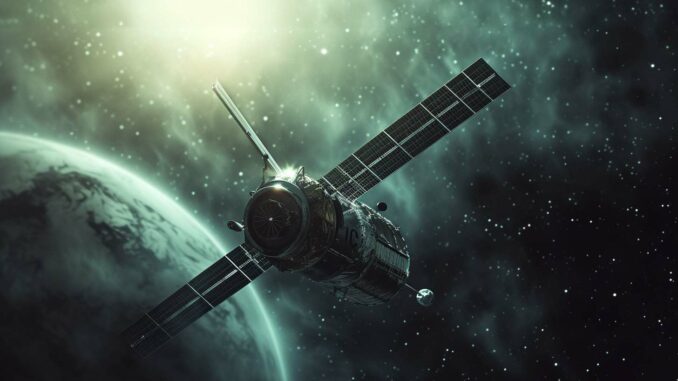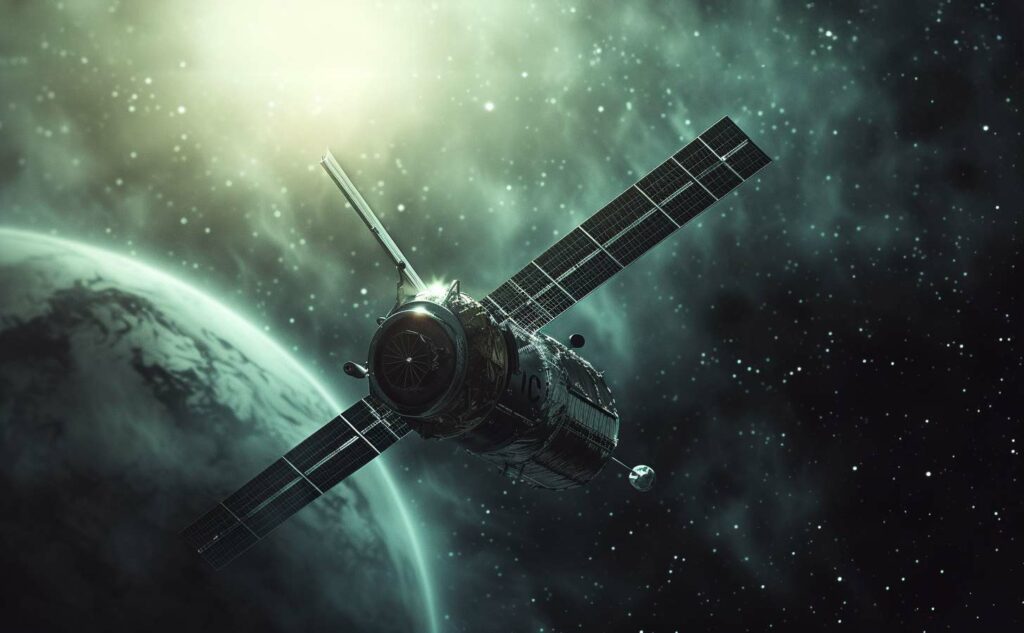
Cosmos 2553: a Russian satellite suspected of testing an orbital nuclear weapon, with implications for global space security.
Understand in 2 minutes
The Russian Cosmos 2553 satellite, in orbit since February 2022, is suspected by the USA of being a test for a future orbital nuclear weapon. Although it has not been confirmed, its position in low orbit at 2,000 km is rare and could indicate experiments for nuclear anti-satellite weapons. The satellite could also study the protection of subsystems against space radiation. The article explores the technical details, advantages, disadvantages and potential consequences of this situation.
The Russian Cosmos 2553 satellite has given rise to concern and speculation about its true purpose. Although officially described as a SAR (synthetic aperture radar) satellite for earth observation, some analysts believe it could be a testbed for a future orbital nuclear weapon. This article analyzes the technical characteristics, strategic implications and potential consequences of Cosmos 2553.
Technical characteristics of Cosmos 2553
Description and Orbit
Cosmos 2553 is in circular orbit at an altitude of around 2,000 kilometers, at the limits of Low Earth Orbit (LEO). This altitude is higher than that of most LEO satellites, providing a unique testing environment. The scarcity of other systems in this orbit, apart from a few inactive satellites, means that experiments can be carried out without interference.
Using Synthetic Aperture Radar (SAR)
SAR radar provides high-resolution images of the earth’s surface, whatever the weather conditions. This technology is crucial for surveillance and military intelligence. However, Cosmos 2553’s position could also indicate tests to assess the effects of space radiation on electronic components, a crucial aspect for the durability of an orbital nuclear weapon.
Advantages and disadvantages of using Cosmos 2553
Advantages
- Enhanced surveillance**: The use of SAR at such a high altitude enables extensive coverage and continuous observation of strategic areas.
- Safe experimentation** : The chosen orbital position minimizes the risk of collision with other satellites and reduces the likelihood of space debris, providing a stable environment for long-term testing.
Disadvantages
- High cost: Developing and launching satellites at such high altitudes is costly. Maintenance and monitoring costs also increase.
- Risk of Provocation: Suspicion of nuclear armament may intensify international tensions and trigger a space arms race.

Strategic and Military Consequences
Impact on Global Security
If Cosmos 2553 proves to be a test for an orbital nuclear weapon, it could upset the global strategic balance. Orbiting nuclear weapons could offer instant strike capability, beyond the reach of traditional defense systems.
International reactions
Suspicions surrounding Cosmos 2553 have already led to cautious statements from the USA and other nations. Confirmation of a nuclear capability could prompt international sanctions and counter-measures, including the development of anti-satellite technologies by other powers.
Surveillance and countermeasures
The USA and other nations are already stepping up their space surveillance. Surveillance satellites, such as Victus Nox, are deployed to keep a close eye on activities in LEO orbit, including those of Cosmos 2553. These systems make it possible to detect and react rapidly to any potential threat.
Cosmos 2553 represents a significant technological breakthrough with major potential implications for international security. Although primarily seen as a SAR satellite, the possibility of it being used as a testbed for orbital nuclear weapons cannot be ruled out. This situation underlines the importance of rigorous space surveillance and enhanced international dialogue to prevent an escalation of tensions and guarantee space security.
Future prospects
Development of Space Defense Capabilities
The progress of Cosmos 2553 highlights the need for nations to develop advanced space defense capabilities. This includes surveillance satellites capable of detecting and tracking objects in LEO orbit and beyond.
International cooperation
International cooperation will be crucial in managing the risks associated with space weapons. Agreements such as the Outer Space Treaty will need to be strengthened and modernized to meet new technological and strategic realities.
Technological innovation
Continuous innovation in space technology is essential. Research into radiation protection and the durability of space systems will contribute not only to military applications, but also to long-term civil and scientific missions.
War Wings Daily is an independant magazine.